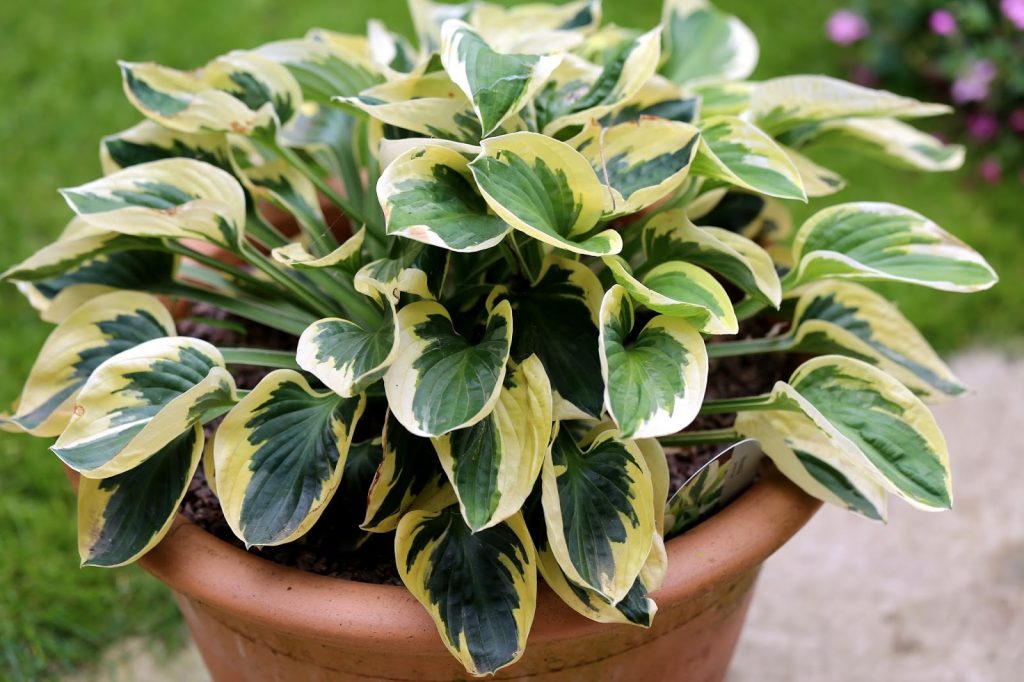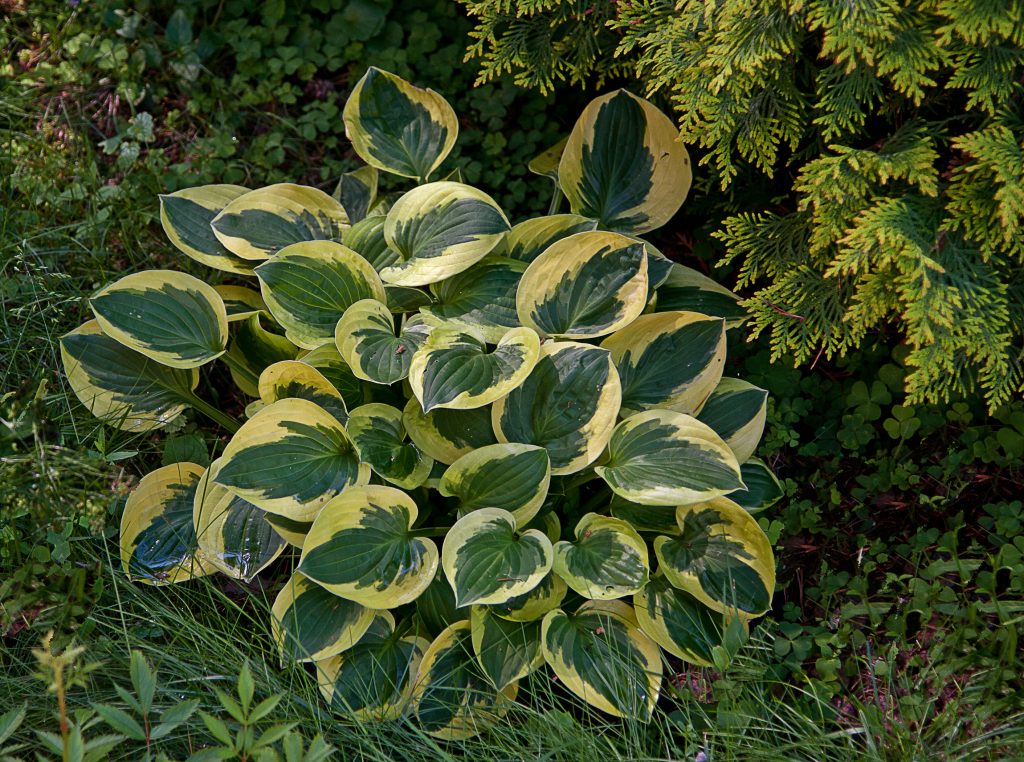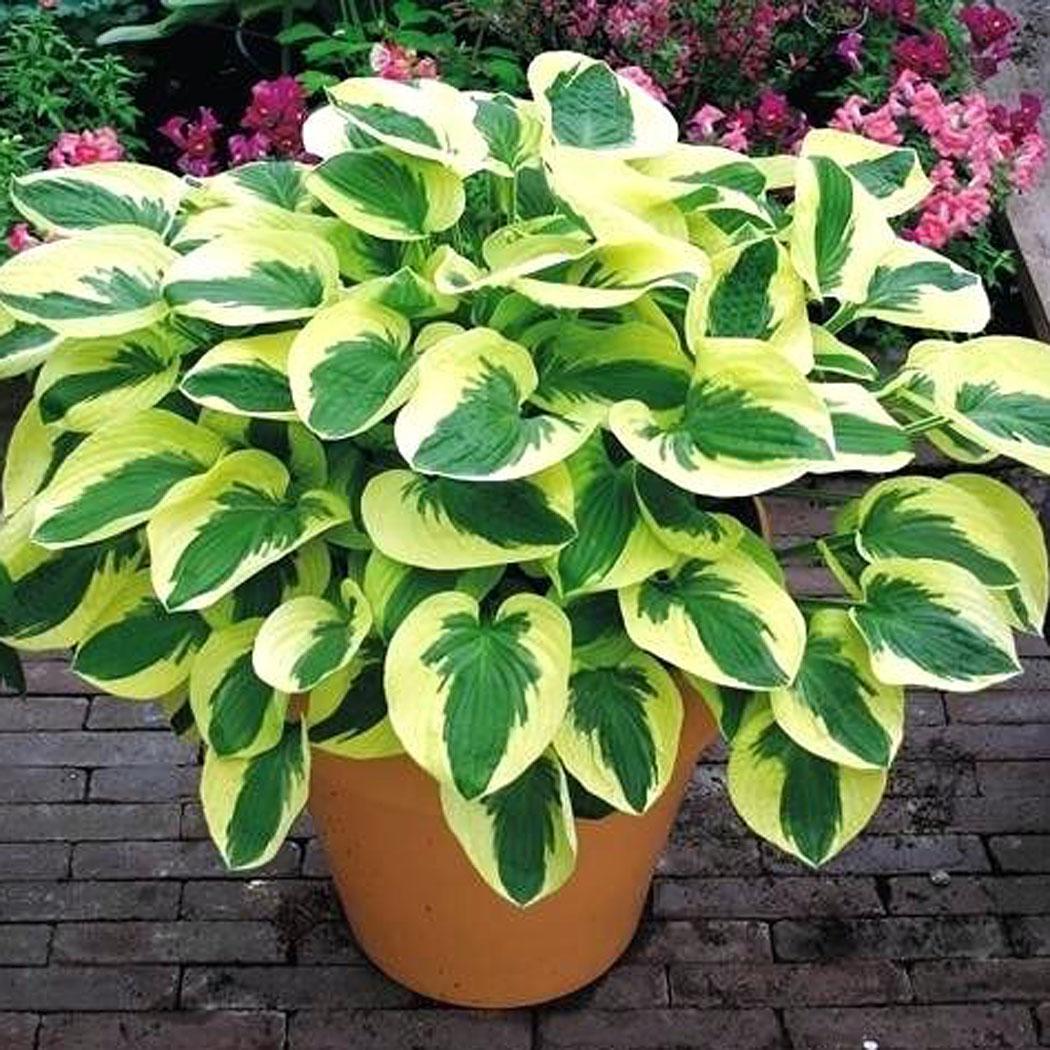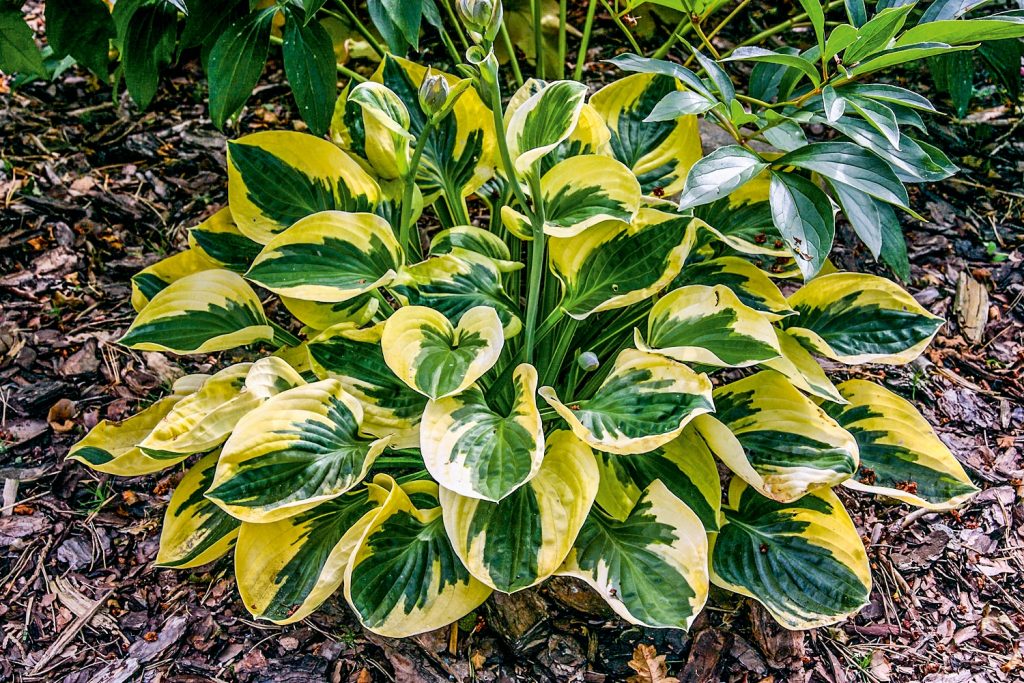Hosta Brim Cap - How to Grow a Plant
Hosta Brim Cup (Brim Cup) is a spectacular perennial from the asparagus family. The hybrid variety was obtained in 1986 as a sport of the Wide Brim variety (originator - P. Aden). The name of the funkii stands for "the edges of the cup", hinting at the bright border of the sheets and the bowl-like shape.

Hosta brim cap description photo
Description of the plant
Brim Cup belongs to the functions of medium size: it reaches 30-35 cm in height, 40-45 cm in width. The bush grows lush, domed. The leaves of the plant are especially effective: dense, with corrugated veins, a thin waxy bloom.
Young leaves are heart-shaped, while more mature ones are oval cupped. In the center they are green, along the edges are decorated with a wide border of yellowish-cream color.
Hosta flower stalks grow slightly higher than the bush itself. Bell-shaped flowers. They are bluish purple at first, but eventually turn completely white. The flowering of funkia begins at the end of June and lasts until the beginning of August.
Landing features
The Bryn Cap function is a shade-tolerant plant. Moreover, it is in partial shade that it acquires the greatest decorative effect. However, this does not mean that the bush needs to be completely isolated from the sun (this will negatively affect the color of the foliage and can provoke fungal diseases).
If the host is located directly in the sun, it must be shaded at midday.
The function is unpretentious in soils, but feels better on light, well-drained loams. Judging by the description of gardeners, it grows well on dense soils, if you add coarse sand to the ground and make good drainage. Despite the moisture-loving nature, the plant should not be planted in places of accumulation and stagnation of water.
Technology:
- A hole is dug on the site with a depth and width of 50 cm, retreating about the same from neighboring plants.
- The first layer is the drainage of small pebbles or broken bricks.
- The pit is filled by a third with soil mixture from the excavated soil, compost and peat.
- Pour a bucket of water (you can add a little manganese) and allow moisture to be absorbed.
- The plant is rolled into a hole along with a lump, covered with a substrate, watered and tamped again.
- From above, the soil around the funkia is mulched with loose organic matter.
Care
The function of the Bryn Cup is an unpretentious plant. She needs proper watering and infrequent feeding, as well as a pruning procedure in the autumn. Caring for this host is not particularly difficult and is available to novice gardeners.

Hosta brim cap photo
Watering
The soil around the funkia should be moist, but without stagnant water. During periods without precipitation, it is watered twice a week using 1-3 buckets (depending on the size of the bush).
You need to moisturize the hosta in the morning - at the root, not along the leaves.
Top dressing
Funkia Bryn Cup is fed twice a season, mulching the soil with organic matter (peat or compost). The first time - in early spring, the second - in the middle of autumn.
Additionally, you can carry out top dressing with complex mineral fertilizers, spreading the granules during loosening or adding a soluble composition after watering.
Pruning and preparing for winter
In autumn, the yellowed leaves of the funkia are cut off, cutting the bush right at the root. This helps the plant adapt to the dormant period and creates pest prevention.
The host is not afraid of frost: for the winter it can be sprinkled with dry foliage, and young specimens can be covered with spruce branches.
Reproduction
The function of the Brim Cup is propagated by cuttings, dividing the bush and sowing seeds. The first two methods are used much more often than the third.

Hosta brim cup
Seed material is not always possible to get and it rarely retains the varietal characteristics of the plant.
Cuttings
Cuttings are cut "with the heel" and treated with a rooting stimulator. The earth in a shady place is loosened and moistened, and then the cut shoots are deepened.
Some of the leaves can be removed to reduce evaporation. Top cuttings are covered with plastic bottles. As the soil dries up, the seedlings are watered, and the cover is sometimes removed for ventilation.
By dividing the bush
It is recommended to divide adult bushes in early spring or autumn, but if necessary, this can be done in summer. The bush is dug up and divided into several parts. Each must have at least one kidney. Delenki are seated in a damp and composted soil in partial shade.
Diseases and pests
| Problem | Symptoms | Prophylaxis | Wrestling |
| Slugs | Holes appear on the leaves, eaten by pests. | Watering in the morning, not in the evenings; Welding birds to the site; Sprinkle the soil with prickly stones or broken shells. | Use beer traps, collect snails by hand. Use special means (Thunderstorm, Slime-eater). |
| Gray rot | Leaves wither, deform, become rusty brown, rot from the edge. | Avoid stagnant water, lay good drainage. Disinfect soil and garden tools. | Cut off the affected leaves, treat them with fungicides (Trichodermin, Oxyhom, Topaz). With an advanced state of the disease, the plant cannot be saved - it must be completely burned, including fallen leaves and weeds growing nearby. |
Use in landscape design
Thanks to the original color of the leaves, the Bryn Cup function is able to revive any garden or summer cottage. It is grown as a groundcover, live curbs, tapeworm, or mixed composition member. She looks spectacular next to taller perennials, which at the same time allows you to solve the problem of shading.

Hosta brim cap photo and description
Hosta is in good harmony with conifers: juniper, thuja, pine, Christmas tree. She creates interesting combinations with ferns, as well as with other varieties of funkia (especially white ones). Bryn Cap looks great in flower beds with roses, geraniums, anemone, primrose.
Testimonials
The Bryn Cup function is very popular among gardeners. Judging by the descriptions, it easily takes root on any soil and does not require painstaking care. It is noticed that the shrub is resistant to weather changes, temporary droughts and cold weather.
Pests and diseases infrequently affect this flower. Some growers grow this compact variety in pots or planters, which allows small courtyards, verandas and balconies to be landscaped. According to the reviews, reproduction by cuttings and cuttings is always successful, without causing much trouble.

